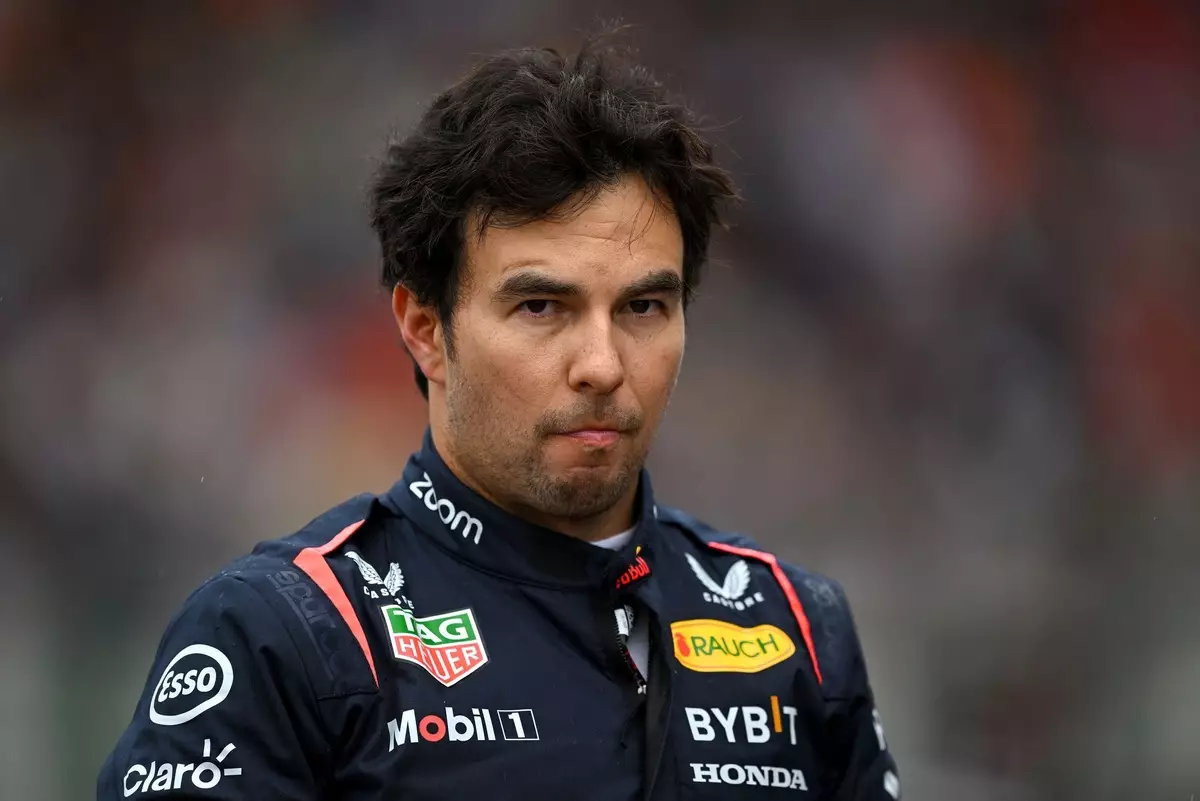Sergio Perez’s experience with Red Bull Racing during the latter half of the 2024 Formula 1 season reveals a troubling yet common phenomenon within high-pressure sports: the creation of a toxic environment fueled by immense expectations. With Formula 1 seemingly growing more competitive each season, the demands on athletes have reached unprecedented levels. Perez’s reflections on his departure illustrate how internal pressures can spiral out of control, ultimately affecting performance and team cohesion. When expectations are set too high, they can become suffocating rather than motivating.
Contractually Bound Yet Vulnerable
Despite signing a two-year contract extension set to run until 2026, Perez found himself under the constant scrutiny of the media and the team alike. The situation becomes particularly puzzling when considering the nature of the sport—drivers often face an onslaught of commentary concerning their performance. With Red Bull investing heavily in its brand image and competitive reputation, the pressure to deliver is amplified tenfold. Instead of rallying behind Perez, Red Bull allowed external narratives to overshadow their commitment to him. This lack of internal support not only isolated Perez but also contributed to a declining morale among the engineers and team members surrounding him.
The dynamics of team culture are critical in motorsport, where teamwork and synergy can greatly influence outcomes on the track. Red Bull’s failure to manage this pressure effectively has turned what should have been a productive environment into a battleground—jeopardizing both individual and team performance.
A Team in Transition
Perez’s discontent didn’t merely arise from media speculation; it stemmed from the collective frustrations felt within the team. After the departure of Adrian Newey, a noted enabler of engineering excellence, Red Bull struggled to maintain its competitive edge. Perez’s comments suggest that the team lost more than just a designer; they lost a pivotal cornerstone of their development strategy. The absence of such a crucial figure evidently contributed to an erosion in confidence, and it raises questions about the team’s capacity to innovate under pressure.
The transition period didn’t only hinder their performance; it paved the way for internal fractures. The arrival and swift dismissal of drivers like Liam Lawson and Yuki Tsunoda reflect a larger issue: a frantic search for a solution that may not guarantee swift results. It mirrors a team grasping at straws in an attempt to regain lost momentum, only resulting in further uncertainty and chaos.
The Aftermath and Regrets
In a revealing moment, Perez acknowledged that Red Bull had expressed regret over the decision to part ways with him. It is a sentiment that can often surface too late in competitive sports, where time is as precious as it is fleeting. The internal acknowledgment of missteps signals a larger discussion about the short-sightedness often inherent in motorsport decision-making.
Helmut Marko’s earlier assertions blaming Perez for losing team bonuses exemplify how easy it is for external pressures to trigger unreasonable scapegoating within a team. In hindsight, the complex interplay of pressures, media narratives, and internal dynamics seems overwhelming. The focus not only on Perez’s individual performance but also on team failure viscerally demonstrates how such an environment can unravel a previously successful partnership.
A Broader Reflection on Motorsport Culture
What Perez’s experience unveils is introspective: it highlights the darkness lurking behind the glittering surface of competitive racing. While the sport is revered for its excitement and athletic prowess, the mental toll on drivers and teams is often overlooked. With mounting pressures from sponsors, fans, and media alike, the need for a healthier, more supportive framework in motoring teams becomes increasingly clear.
Moving forward, the future of Formula 1 hangs in a delicate balance—between innovation and tradition, excellence and expectation, stability and chaos. As the sport evolves, so too must its approaches to team dynamics and mental health support. In unveiling his struggles, Perez inadvertently invites a conversation that extends beyond the racetrack, addressing the psychological implications of high-pressure sports as a whole. His narrative serves as a cautionary tale for a sport that must prioritize the well-being of its drivers alongside the pursuit of victory.


Leave a Reply